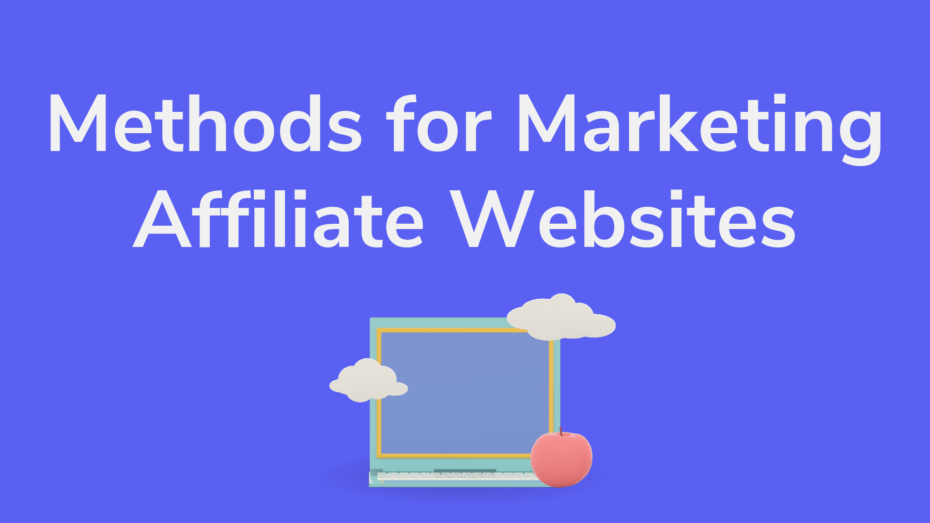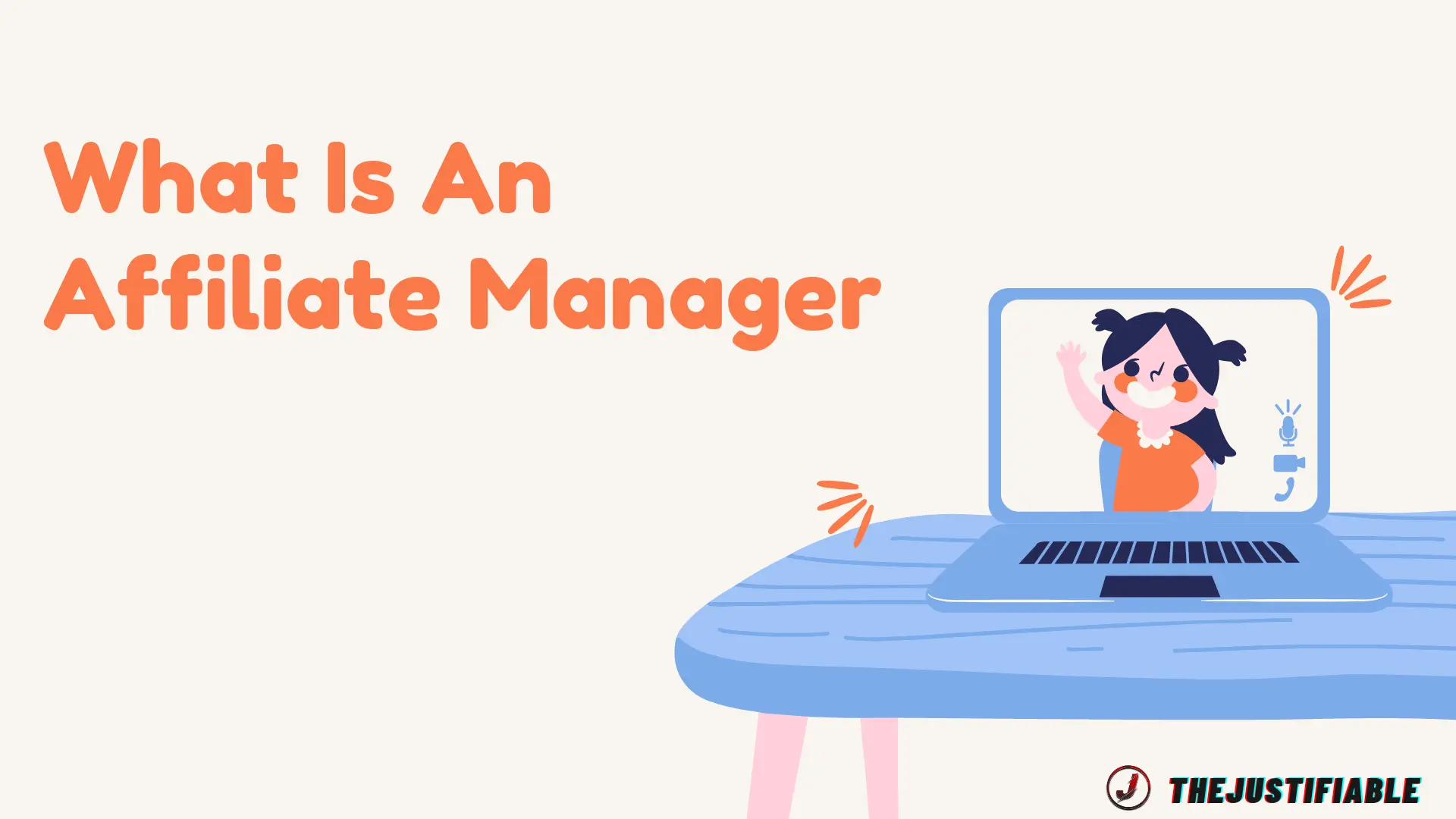Are you looking to enhance your approach to marketing affiliate websites? Wondering which methods can effectively increase your online presence and profitability? In my opinion, mastering the art of affiliate marketing involves more than just understanding the basics; it’s about applying them strategically to captivate and convert your audience.
I believe that starting with a strong foundation in SEO and content marketing can significantly boost your visibility and engagement. In this guide, I’ll share key strategies that are not only effective but also straightforward to implement. Join me as we explore simple yet powerful ways to optimize your affiliate marketing efforts.
Affiliate Programs Recommendations
FlexOffers
| MyLead
| ShareASale
|
Table of Contents
Explore Fundamental Strategies to Boost Your Affiliate Reach
Marketing affiliate websites effectively begins with a solid understanding of the digital landscape. From my perspective, engaging your target audience through optimized content and strategic outreach is essential. According to industry experts, the integration of SEO and targeted marketing tactics can significantly enhance your online presence.
I recommend focusing on keywords that resonate with your niche, ensuring that your content is both informative and appealing. This approach not only attracts visitors but also retains them, increasing the likelihood of conversions.
Another vital aspect is the usability and functionality of your website. I strongly believe that a user-friendly design can make a significant difference in how potential customers perceive your affiliate offerings.
My suggestion is to conduct regular reviews of your site’s layout, speed, and accessibility to ensure it meets current standards. Most importantly, your site should be mobile-friendly, considering the increasing reliance on smartphones for internet browsing.
Lastly, collaboration with other affiliate marketers and brands can open new avenues for growth. My advice is to look for partnership opportunities that align with your brand’s values and goals.
This can lead to shared resources, increased traffic, and improved credibility. Speaking personally, collaborative efforts have been a cornerstone of my success in affiliate marketing, providing both parties with mutual benefits.
Utilizing SEO to Increase Visibility for Affiliate Links
SEO is a cornerstone of digital marketing, especially for promoting affiliate links. I believe that mastering SEO tactics, such as keyword optimization and link building, is crucial. According to recent data, effectively optimized websites see significantly higher traffic and engagement rates.
Here’s how you can start: focus on long-tail keywords that match your audience’s search intent. This strategy helps capture traffic from users already interested in what you have to offer.
Creating content that naturally incorporates your affiliate links is an art. My recommendation is to craft articles that address common questions or problems related to your affiliate products.
By integrating links into valuable content, you avoid the pitfalls of over-promotion and enhance user experience. From my point of view, this approach not only boosts SEO but also builds trust with your audience.
Regularly updating old content can also refresh your SEO efforts. I suggest revisiting existing articles and optimizing them with new information and keywords. This not only keeps your content relevant but also gives old pages new life, improving your overall site authority and ranking.
Effective Social Media Tactics for Affiliate Promotion
Social media platforms are invaluable tools for affiliate marketers looking to expand their reach. From my experience, engaging directly with followers through posts, stories, and live sessions can significantly enhance your visibility and connectivity.
I recommend using targeted ads to reach a broader audience specifically interested in your niche. This personalized approach can lead to higher engagement rates and more effective promotions.
Building a community around your brand can transform passive followers into active promoters. In my opinion, creating groups or forums where users can discuss your products and share their experiences fosters a strong sense of community.
My advice is to be actively involved in these discussions, providing insights and support, which can turn regular customers into loyal advocates.
Leveraging influencer partnerships can amplify your affiliate marketing efforts. I think selecting influencers whose audiences align with your target demographic is key.
According to recent studies, consumers are more likely to trust and purchase products endorsed by influencers they follow. I couldn’t agree more with this strategy, as it combines authenticity with reach, driving both traffic and conversions.
Finally, tracking and analyzing the performance of your social media campaigns is essential. I am of the view that using analytics tools to monitor what works and what doesn’t allows you to refine your strategies over time.
My recommendation is to focus on metrics like engagement rates, click-through rates, and conversion rates to gauge the effectiveness of your campaigns and make data-driven decisions.
Leverage Content Marketing to Engage and Convert
Content marketing is a powerful tool for affiliate marketers looking to draw attention to their sites. I strongly believe that informative and engaging content not only attracts visitors but also keeps them coming back.
From my perspective, creating value-rich content that answers common questions and solves problems can set your affiliate website apart from competitors. My recommendation is to regularly update your blog with fresh, relevant articles that integrate your affiliate links subtly, ensuring that your content remains both informative and useful.
To effectively convert visitors into buyers, your content must resonate with their interests and needs. I suggest using analytics tools to understand your audience’s preferences and tailor your content accordingly.
From my point of view, personalized content increases the likelihood of engagement and conversion. For example, creating buyer guides or how-to articles related to your affiliate products can provide practical value, making it more likely that readers will consider purchasing through your links.
Consistency in publishing quality content can help establish your site as a go-to resource in your niche. According to industry leaders, sites that regularly provide valuable content tend to have higher credibility and authority, which are essential for affiliate marketing success. I recommend setting up a content calendar to maintain a steady flow of articles and keep your audience engaged over time.
Crafting Compelling Blog Posts to Highlight Affiliate Products
Writing blog posts that highlight affiliate products requires a balance of informative and promotional tones. I believe that the key to successful affiliate blog posts is to integrate products naturally within content that addresses your audience’s interests or problems.
For instance, a blog post about “The Best Outdoor Gear for Beginners” can seamlessly incorporate affiliate links for recommended products, providing readers with useful information while guiding them towards making a purchase.
To enhance the appeal of your blog posts, include real-life applications of the products. I recommend sharing personal experiences or customer testimonials to illustrate the benefits and practical uses of the products. This approach not only adds credibility but also helps readers visualize how they might use the products in their own lives.
Optimizing your blog posts for search engines is crucial for driving traffic. My advice is to focus on SEO best practices such as using relevant keywords naturally, optimizing meta descriptions, and creating engaging titles. Additionally, including images and infographics can increase the attractiveness and shareability of your posts, further boosting visibility.
Lastly, encouraging interaction through your blog posts can lead to higher engagement. I suggest ending posts with a call to action, inviting readers to comment with their experiences or questions. Engaging with these comments can build a community around your blog, fostering loyalty and repeat visits.
Creating Video Content That Drives Affiliate Sales
Video content has become an essential strategy for engaging audiences effectively. From my perspective, videos like tutorials, reviews, and unboxings can significantly influence buying decisions.
They provide a dynamic way to showcase products and demonstrate their value. I recommend focusing on high-quality production and clear, informative presentations to make your videos appealing and helpful.
Personalization in videos can create a direct connection with your audience. I believe that introducing yourself and sharing personal insights or stories related to the products can make your content relatable and trustworthy. This personal touch encourages viewers to consider your recommendations seriously.
Strategically using call-to-actions in your videos can enhance affiliate sales. According to recent data, videos with a strong call-to-action have higher conversion rates. I suggest clearly directing viewers on what to do next, whether it’s visiting a link, signing up for a newsletter, or following your channel for more content.
Regularly analyzing the performance of your video content is key to refining your strategy. I am of the view that understanding what works and what doesn’t allows you to optimize future content for better results.
My advice is to track metrics such as view count, likes, comments, and conversion rates to assess the effectiveness of your videos and adjust your approach accordingly.
Harness the Power of Email Marketing for Affiliate Success
Email marketing remains a cornerstone for affiliate marketers seeking to drive conversions. From my perspective, it’s not just about sending emails; it’s about sending the right message to the right people at the right time.
I recommend integrating email segmentation to tailor your messages according to subscriber preferences and behaviors. This strategy enhances engagement by ensuring that your audience receives relevant content that resonates with their interests and needs, significantly boosting the chances of clicking through your affiliate links.
Crafting personalized email content can significantly enhance your affiliate marketing efforts. I believe that personalization goes beyond just addressing recipients by their first names. It includes tailoring the content to meet their specific interests, which can be discerned from their past interactions with your website.
According to recent studies, emails that feature a high degree of personalization can lead to higher open and click-through rates. My advice is to use data-driven insights to customize your emails, making each message feel specially crafted for its recipient.
Consistent testing and optimization of your email campaigns are essential. I strongly believe that the most successful email marketers are those who continuously analyze the performance of their emails and adapt accordingly.
A/B testing different aspects of your emails, such as subject lines, email layouts, and call-to-actions, can provide valuable insights into what engages your audience most effectively. I suggest employing these insights to refine your campaigns, ensuring each email not only communicates effectively but also drives results.
Building a Subscriber List Geared Towards Affiliate Offers
The first step in effective email marketing is building a robust subscriber list. I recommend adopting ethical list-building practices, such as using sign-up forms on your website with clear incentives for joining.
My advice is to offer something of value, like a free ebook or a discount code, to encourage sign-ups. This approach not only increases the size of your list but also ensures that you attract subscribers who are genuinely interested in your offerings.
Segmenting your list can dramatically improve the effectiveness of your campaigns. From my point of view, segmentation allows you to customize your messaging based on user demographics, past purchases, and online behavior.
This tailored approach makes your emails more relevant and engaging to each subscriber. I believe that the more targeted your emails, the better the response rates will be.
Maintaining subscriber engagement over time is crucial. I think regular updates about new content, special offers, or insider tips can keep your audience interested. My suggestion is to also implement re-engagement campaigns for users who have not interacted with your emails for a while. These campaigns can help you bring back disengaged subscribers and prevent them from drifting away.
It’s also important to respect subscriber preferences and privacy. My recommendation is to make it easy for subscribers to adjust their email preferences or unsubscribe if they choose to. This builds trust and ensures compliance with regulations like GDPR, enhancing your brand’s reputation.
Email Marketing Recommendations
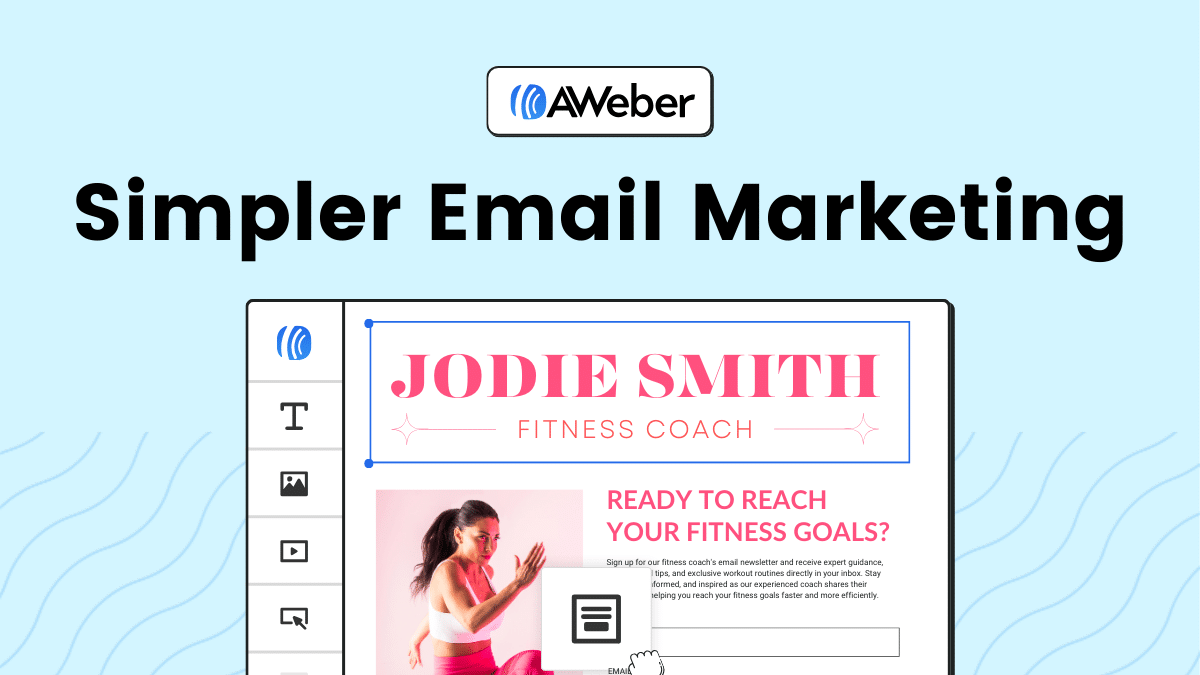 Aweber
| 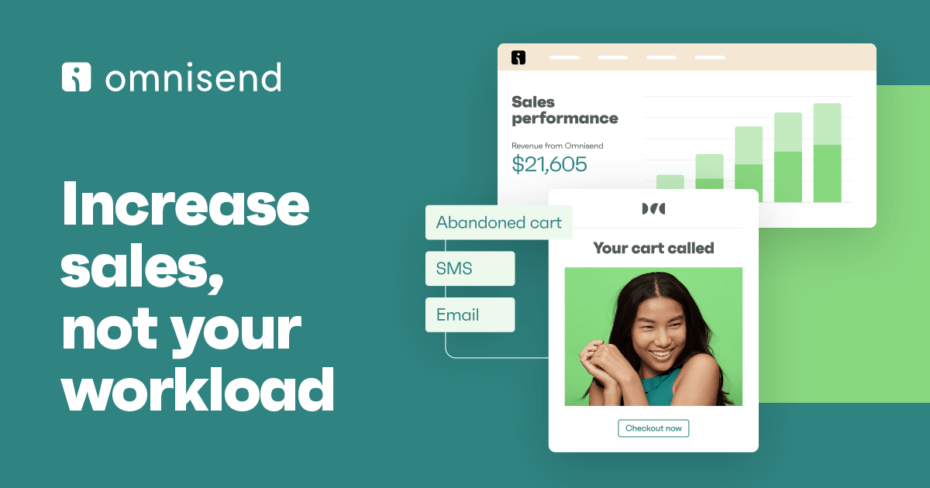 Omnisend
| 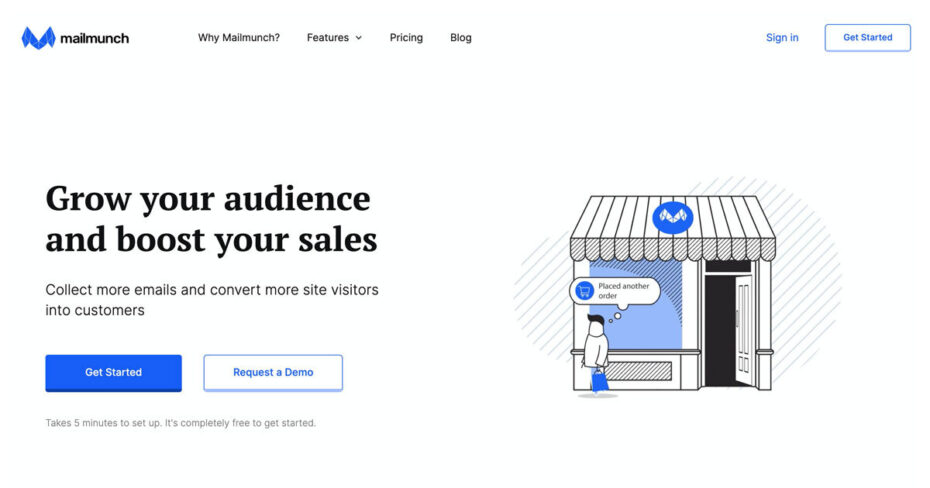 Mailmunch
|
Designing Impactful Email Campaigns for Affiliate Products
Effective email campaigns for affiliate products start with a compelling subject line. I would say that your subject line acts as the gatekeeper to your message; it should spark interest and make recipients want to read more.
Experimenting with different formats and styles, such as questions, personal touches, or urgency, can help you find what works best for your audience.
The body of your emails should balance informative content with attractive offers. I am of the view that each email should provide value, whether it’s through useful information about the product or an exclusive offer.
My impression is that videos or high-quality images of the product can enhance engagement and help visualize the benefits, potentially increasing conversion rates.
Calls-to-action (CTAs) are vital for driving affiliate sales through emails. I suggest making your CTAs clear and easy to find. A button with a contrasting color and direct language like “Buy Now” or “Get This Deal” can be very effective. According to marketing experts, a well-placed CTA can significantly increase the click-through rates of your emails.
Lastly, tracking and analyzing the results of each campaign is crucial. I think using analytics to monitor open rates, click rates, and conversions from your emails allows you to understand what’s working and what isn’t.
This insight lets you continually refine your strategy for better results, ensuring your email marketing efforts are as effective as possible in promoting affiliate products.
Optimize Your Website for Peak Affiliate Performance
Enhancing your website’s performance is critical for successful affiliate marketing. In my opinion, the first step is ensuring that your website is optimized for speed and user interaction. This not only improves the user experience but also boosts your search engine rankings, which is vital for attracting more organic traffic.
I recommend conducting regular audits to identify and fix any issues that could slow down your site, such as uncompressed images or bulky code. Most importantly, keep your design clean and focused, which helps in retaining visitors and guiding them towards your affiliate links.
A crucial aspect of website optimization is the strategic placement of affiliate links. My advice is to integrate these links naturally within high-quality content. This could be through informative blog posts, tutorials, or product reviews that genuinely assist users in making purchasing decisions.
From my perspective, providing real value to your readers can build trust and increase the likelihood of clicks on your affiliate links, thus improving conversion rates.
Consistent monitoring and updating of your website are also essential. I believe that staying updated with the latest SEO practices and web standards can significantly impact your affiliate success.
Implementing the latest security features and ensuring that all plugins or themes are up to date are good practices that protect your site and improve its performance. My suggestion is to use reliable tools that provide insights into your website’s performance metrics, helping you make informed decisions.
Improving Site Speed to Enhance User Experience
Reducing loading times is a key factor in enhancing user experience. I strongly believe that faster websites provide a better user experience, leading to higher retention rates and more conversions.
I recommend optimizing images, minifying CSS and JavaScript, and using a content delivery network (CDN) to speed up load times. According to recent studies, websites that load within two seconds tend to have significantly lower bounce rates.
Leveraging browser caching can make a notable difference in load times. When users revisit your site, caching allows their browser to load pages without sending another HTTP request to the server.
My advice is to set an expiry date in your HTTP headers for static resources. This simple adjustment can prevent browsers from fetching static content like images and JavaScript with each visit, speeding up the overall experience.
Another effective strategy is optimizing your server’s response time. I suggest looking into your server’s performance to ensure it’s not a bottleneck. If you’re on shared hosting, consider upgrading to a more robust hosting solution like dedicated or VPS hosting.
This can reduce your site’s load time and handle traffic spikes more effectively, which is often crucial during high-traffic periods driven by affiliate campaigns.
Mobile Optimization: A Necessity for Modern Affiliate Marketers
Mobile optimization is no longer optional for affiliate marketers. I recommend making sure your website is fully responsive, meaning it adjusts smoothly to different screen sizes.
A mobile-friendly website not only caters to a larger audience but also benefits from higher rankings in mobile search results. Most importantly, Google uses mobile-first indexing, so a well-optimized mobile site is crucial for SEO.
Touch-friendly design elements are essential for a good mobile user experience. I suggest incorporating larger buttons, easy-to-navigate menus, and accessible interactive elements. These features make it easier for mobile users to navigate your site and interact with your content, including affiliate links.
Loading speed on mobile devices is particularly critical. I believe that optimizing for mobile speed involves more than just responsive design. It also includes reducing redirects, leveraging AMP (Accelerated Mobile Pages), and optimizing images specifically for mobile.
My impression is that users on mobile devices often use less stable internet connections, so improving load times can significantly enhance their experience.
Regular testing on various mobile devices ensures that your site is optimized across all platforms. I strongly believe in using tools like Google’s Mobile-Friendly Test to check your website’s mobile compatibility. This helps identify any potential issues that could affect the user experience and, subsequently, your affiliate conversions.
Innovative Techniques to Drive Traffic to Affiliate Sites
Exploring new methods to increase traffic to affiliate websites is crucial for sustained growth and profitability. From my perspective, innovative marketing strategies not only attract more visitors but also improve the overall engagement and conversion rates. I suggest incorporating a mix of traditional and creative tactics tailored to your target audience.
Most importantly, understanding the dynamics of your niche market and adapting your strategies accordingly can yield significant benefits. By constantly experimenting with new techniques, you can discover what resonates best with your audience and refine your approach over time.
Utilizing analytics is key to understanding which techniques drive traffic effectively. I recommend setting up detailed tracking for all your traffic sources to analyze the performance of each channel.
This data allows you to optimize your marketing efforts based on actual results rather than assumptions. From my point of view, the insights gained from analytics enable you to make informed decisions about where to allocate your budget and efforts to maximize the return on investment.
Creating a synergy between various traffic-driving strategies can amplify your results. My advice is to integrate multiple channels such as SEO, content marketing, social media, and email campaigns to create a cohesive marketing strategy.
According to industry experts, a multi-channel approach helps in capturing a wider audience and reinforcing your marketing messages across different platforms. This not only increases your visibility but also provides multiple touchpoints for potential customers, enhancing the likelihood of conversions.
Exploring Paid Advertising Avenues for Immediate Impact
Paid advertising offers a direct method to drive traffic to affiliate sites with immediate effect. I strongly believe that platforms like Google Ads and Facebook Ads provide powerful tools to target specific demographics with precision.
My recommendation is to start with a small budget to test different ad formats and audiences to see what works best for your niche. Most importantly, optimizing your ads for high conversion rates rather than just clicks can significantly increase your affiliate earnings.
Retargeting is an essential component of successful paid advertising campaigns. I suggest using retargeting to reach individuals who have visited your website but did not make a purchase.
This strategy keeps your brand and products in the minds of potential customers, increasing the chances of conversion. My impression is that retargeted ads tend to have higher click-through rates because they are shown to an audience already familiar with your site.
Using native advertising can also be an effective way to drive traffic. Native ads blend in with the content of the platform where they are placed, which can lead to higher engagement rates.
From my experience, these ads are less intrusive and can drive quality traffic to affiliate sites. I recommend focusing on creating ads that offer value and seamlessly integrate with the surrounding content to enhance user experience.
Measuring the ROI of each campaign is crucial to determine the effectiveness of your paid advertising efforts. I am of the view that tracking conversions and calculating the return on ad spend (ROAS) are key metrics to assess.
This analysis helps in fine-tuning your advertising strategy and budget allocation for future campaigns, ensuring that you invest in the most profitable avenues.
Leveraging Influencer Partnerships for Broader Reach
Influencer partnerships can significantly extend the reach and credibility of your affiliate marketing efforts. In my opinion, collaborating with influencers who align with your brand values and have an engaged audience can drive targeted traffic to your site. I recommend choosing influencers based on the relevance of their audience to your products, rather than just their follower count.
Creating co-branded content with influencers can enhance authenticity and trust. I suggest working closely with influencers to develop content that resonates with both your brands and their followers.
This collaboration can include blog posts, videos, social media content, and more. According to recent trends, authentic and engaging content produced in partnership with influencers tends to perform better in terms of engagement and conversion rates.
Setting clear goals and expectations is crucial for successful influencer partnerships. From my perspective, it’s important to communicate your marketing goals and how you measure success early in the relationship. I recommend establishing a clear agreement outlining each party’s responsibilities and compensation to avoid any misunderstandings.
Regularly reviewing and optimizing influencer partnerships is necessary to maintain their effectiveness. I am of the mind that continual assessment and feedback can improve the quality of collaborations and ensure they remain mutually beneficial.
My advice is to monitor the performance of influencer-driven traffic and make adjustments to strategies and partnerships as needed to maximize the impact on your affiliate marketing goals.


